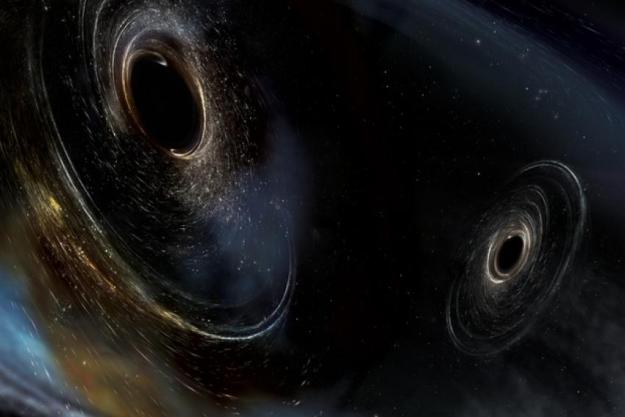Deep in a distant galaxy called 1ES 1927+654, something strange is happening to a black hole. This hungry monster had been feeding on nearby dust and gas as you would expect, but one day two years ago it simply disappeared.
Scientists can monitor black holes, not by observing them directly as they absorb light, but by observing the ultrahot particles of gas and other matter which swirl around them, in structures called black hole coronas which give off X-rays which can be detected from Earth. These scientists were utterly puzzled when this particular black hole faded by a factor of 10,000 over a period of just over a month.
And then, even stranger, the black hole rebounded and over a period of 100 days, became 20 times brighter than it had been before. The scientists were mystified.
“We just don’t normally see variations like this in accreting black holes,” Claudio Ricci, an assistant professor at Diego Portales University in Santiago, Chile, and lead author of the study, said in a statement. “It was so strange that at first we thought maybe there was something wrong with the data. When we saw it was real, it was very exciting. But we also had no idea what we were dealing with; no one we talked to had seen anything like this.”

Now, the scientists think they have an answer to this conundrum: They believe a runaway star could have been sucked into the black hole and been torn apart by the gravitational forces. The scattering of debris caused by the destruction of the star could have temporarily dispersed the cloud of gas around the black hole, stopping the production of X-rays. Then, as the material from the star was devoured by the black hole, the black hole gave off more energy as it fed.
The observations of the event were made using NASA’s X-ray telescope, the Neutron star Interior Composition Explorer (NICER) on the International Space Station. Even though it is extremely far away, scientists were able to gather a great deal of data by observing the galaxy over a period of 15 months. This was the first time that such a dramatic change in the brightness of a black hole has been observed to happen so quickly, and scientists are still puzzling over the event.
“This dataset has a lot of puzzles in it,” said Erin Kara, an assistant professor of physics at the Massachusetts Institute of Technology and a co-author of the new study. “But that’s exciting, because it means we’re learning something new about the universe. We think the star hypothesis is a good one, but I also think we’re going to be analyzing this event for a long time.”
The findings are published in the Astrophysical Journal Letters.
Editors' Recommendations
- Biggest stellar black hole to date discovered in our galaxy
- Nightmare black hole is the brightest object in the universe
- Record-breaking supermassive black hole is oldest even seen in X-rays
- This peculiar galaxy has two supermassive black holes at its heart
- Swift Observatory spots a black hole snacking on a nearby star




